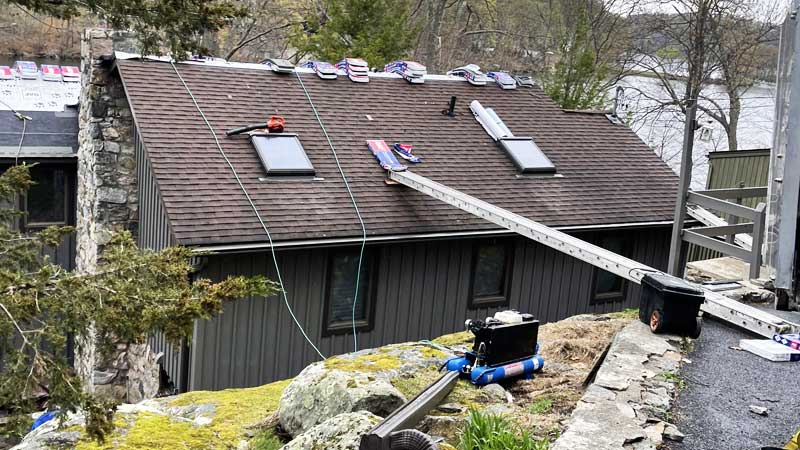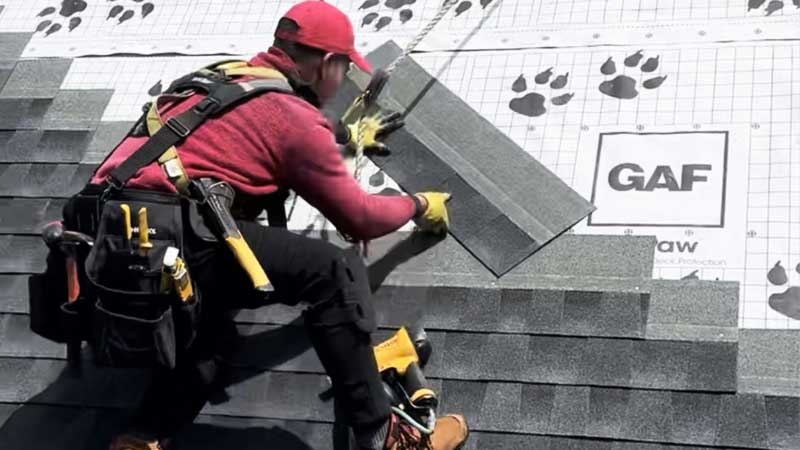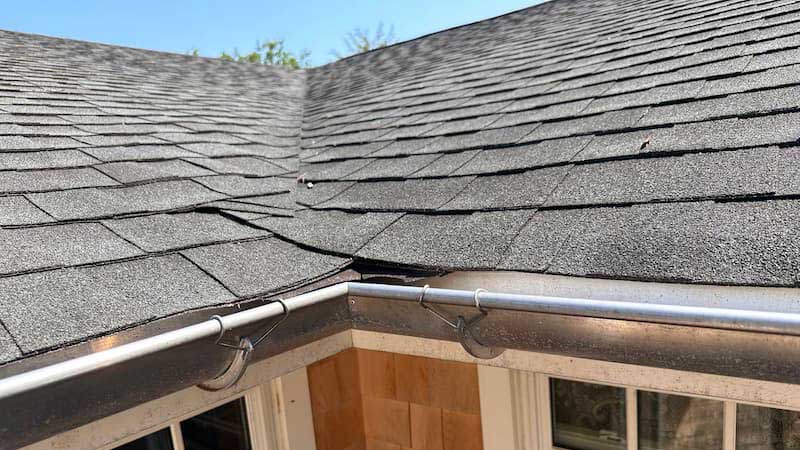Roof Flashing and Roof Crickets
When it comes to your roof, understanding its various components is key in understanding how it works and what to do when it and if it stops working properly. Every piece of your homes roof is crucial in keeping your home safe and dry. Your roof protects everything under it from leaks and other potential problems. This guide will highlight two crucial roofing elements: roof flashing and a popular though be it lesser known roof flashing element, the roof crickets.
Roof Flashing: The Unsung Hero
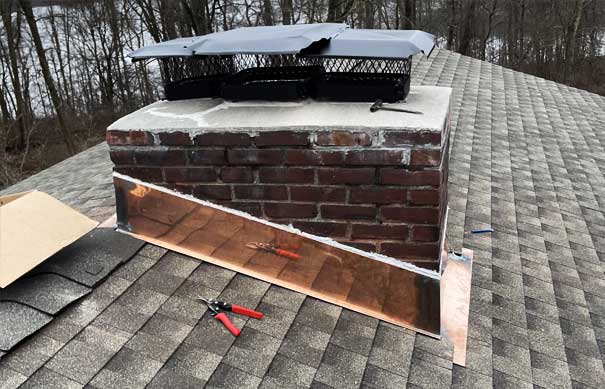 Roof flashing is a thin piece of metal installed to direct water away from vulnerable areas on your roof, such as where your shingles meet walls, chimneys, or roof valleys.
Roof flashing is a thin piece of metal installed to direct water away from vulnerable areas on your roof, such as where your shingles meet walls, chimneys, or roof valleys.
Roof flashing creates a barrier that redirects water away from these vulnerable areas and towards the gutters or downspouts, preventing leaks and potential water damage. Properly installed flashing is critical to a roofing system’s long-term integrity and performance.
There are four common types of roof flashing:
- Apron Flashing: This L-shaped flashing is applied at the bottom of a wall and can extend up to 14 feet to provide proper coverage. It’s also used around dormers to prevent water from reaching your windows.
- Step Flashing: Step flashing is mainly positioned against wall sides and chimneys. It requires placing a piece of flashing beneath each shingle adjacent to the wall, forming a step-like arrangement that prevents water infiltration.
- Counter Flashing: Similar to step flashing, counter flashing is used on walls and chimneys. The critical difference is that the flashing is embedded into an existing mortar joint and extends over the top of the brick.
- Roof Valley Flashing: Roof valleys are particularly susceptible to leaks due to the high water flow. In open roof valleys, metal valley flashing is installed to guide water safely down the roof. Note that this type of flashing is only used with specific roofing materials that can’t bend to close the valley.

Flashing: Material Choices, Replacement, and Inspections
- Material Options: When replacing your roof flashing, you have various metal choices, such as aluminum, steel, or copper. Each metal has its advantages and cost considerations. For example, steel is common due to its clean look and affordability, while copper offers a more upscale appearance but comes at a higher initial cost.
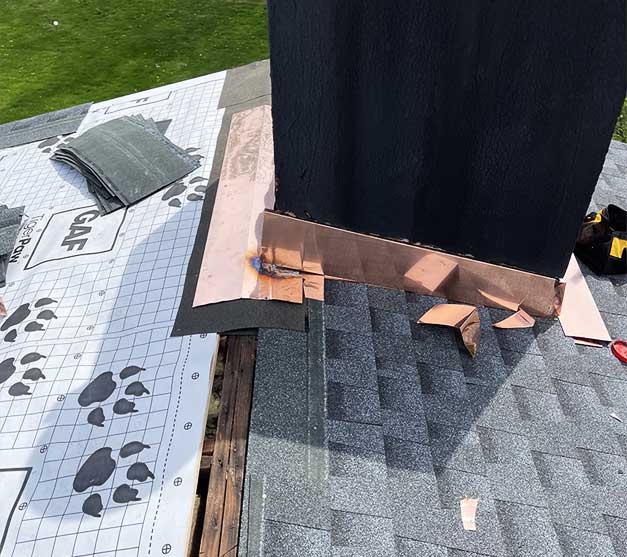 Replacement During Roof Replacement: While there may be situations where your existing flashing doesn’t need replacing, it’s generally advisable to do so when getting a new roof. This ensures you won’t have to worry about future leaks as the old metal degrades. If your roofing contractor confirms that your flashing is still in good condition, it might be an exception.
Replacement During Roof Replacement: While there may be situations where your existing flashing doesn’t need replacing, it’s generally advisable to do so when getting a new roof. This ensures you won’t have to worry about future leaks as the old metal degrades. If your roofing contractor confirms that your flashing is still in good condition, it might be an exception.- Roof Inspection: Roof flashing typically outlasts the original roof, but inspecting it as part of your annual roof maintenance is crucial. Regular roof inspections help your roofing contractor ensure the flashing is doing its job and remains structurally sound, saving you from costly repairs and potential damage to your home’s interior.
Roof Crickets: Not the Insect, but Equally Important
What Is a Roof Cricket?
A roof cricket is a double triangle structure built behind a chimney to divert water around it effectively. When rainwater flows down your roof, it hits the cricket and splits down each side, avoiding direct contact with the flat wall of your chimney.
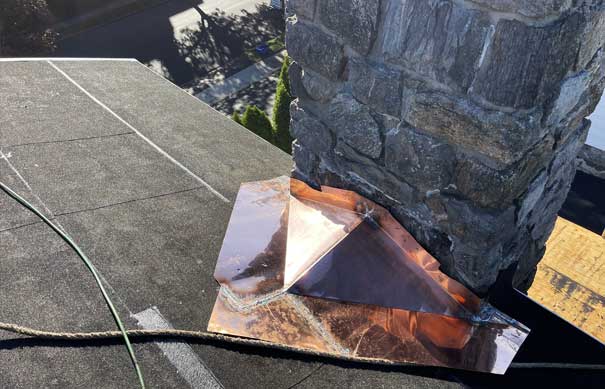
Why is a roof cricket essential?
Besides preventing leaks, building codes mandate it for chimneys wider than 30 inches. If your roof lacks one, consider installing it when updating it, mainly if it’s an upgrade via your homeowners’ insurance. Roof crickets can be made from various materials, including the same shingles used for roof replacement, metal, or a piece of membrane. Your choice depends on your budget and aesthetic preferences.A Roof Cricket’s Impact on Roof Replacement Cost:
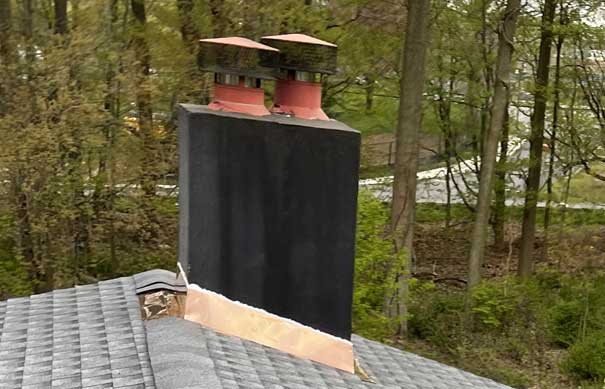
Adding a roof cricket can influence the total cost of replacing your roof. Aspects such as size, materials used, labor, and duration all play a part in determining the final expense. Being aware of these cost factors is vital when planning your roofing investment.
In short, roof flashing and crickets are crucial to your roof’s longevity. They direct water appropriately, ensuring your home remains dry and safeguarded. Remember that a properly maintained roof guarantees a safe and cozy home.
At The Roofing Pros of Westchester we see education as a key factor in all the work we do, helping our roof replacement customers navigate the complexities, of the roofing industry ensures our clients investment is resilient, visually appealing, and enduring.
We install roof that safeguard homes, protecting everything and everyone you cherish inside.




